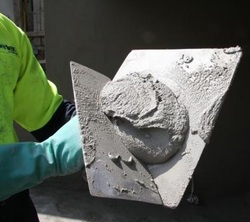
The explanation is quite simple: 'cement render' contains cement, and 'acrylic render' does not.
Cement render comes dry, i.e., requires hydration to activate, acrylic render comes already wet, i.e., in a pale or a bucket.
Cement render dries solid and brittle, and is prone to cracking if ever there is movement in the walls, whereas acrylic render remains flexible and can absorb a small degree of movement, as it is essentially a sheath, or a coating.
Cement render can be applied quite thick, i.e., up to 15mm depending on the substrate, whereas acrylic render is usually used more so as a skimcoat, since it relies on evaporation to set.
The only thing these two products have in common is that they are both applied by trowel and done so by a renderer.
Both systems have their limitations and their own list of pros and cons. For best results, they can be used one after another to achieve the best of both worlds!
Call us today on 1300 441 302.




 RSS Feed
RSS Feed






